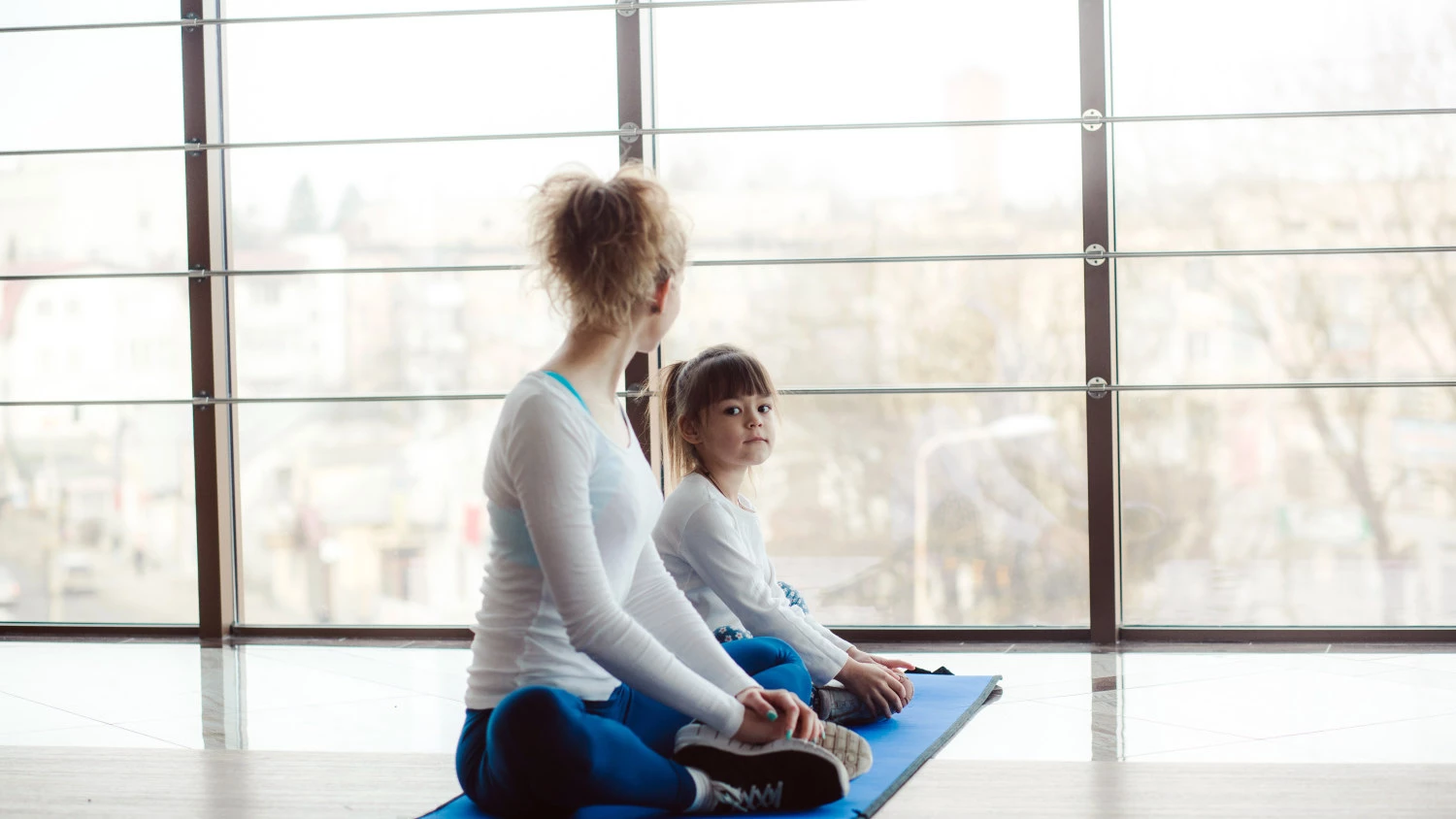Yoga Self-Care for Parents and Caregivers of Autistic Children

As any parent or teacher will tell you, nurturing children in a mindful way, and giving them the structure they need to thrive is a big job. When it comes to children on the autism spectrum, the scope and intensity of caregiving doubles or triples since these children often require more from their parents and caregivers than most children do.
For over 35 years I have been working with parents and teachers using yoga, meditation, relaxation, and mindfulness to help counterbalance the all-consuming nature of caring for autistic children, and the relentless therapy schedule that often accompanies them.
I run a children’s yoga training program called Radiant Child Yoga that helps people to remember how to learn yoga in playful ways, be present to themselves through meditative processes, and feel more connected to their heart rather than be in their heads, as we tend to do. The program is a simple and playful way to get into the “yoga state of mind,” and from there, share yoga tools with children of all ages and abilities.
Here are a few simple yoga practices to work (and play!) with. Don’t be concerned about doing them all. Instead follow your intuition by choosing those that light up for you. For extra fun and connection, share them with your children!
5-5-5- Breath: Breathe in to a count of five, hold the breath for five, exhale for five. Work up to a count of eight or ten. Great for calm and focus.
Earthquake: Stand up. Start with shaking your legs, move up to your torso, arms, neck and head. Take a deep breath in at the end and exhale with an explosive sound of the earthquake. Do this several times. For emotional release and shaking off the worries of the day.
Deep Relaxation with Ocean Breath: Lie down on a bed or yoga mat with a pillow under your knees and a small pillow under your head. Imagine you are lying on a beach. Move around slightly to get more comfortable, as though you are allowing the sand on the beach to form to your body for the most support. Close your eyes and imagine the sun shining directly on your body. Especially feel it radiating out from the center of your chest. Hear the sound of the ocean moving up to the shore as you inhale. Let there be a pause, an ebb in the flow, at the top of the inhalation. Then exhale and imagine the wave moving back to merge with the deep and vast ocean. Continue for a few minutes or until you feel a difference in your state of being. For transitioning from being wired up and overthinking, to feeling relaxed and calm.
Heart-Cross Sa Ta Na Ma Meditation: Sit on a chair or the floor with your back straight. Cross your arms at the forearms placed in front of your heart center, creating an X shape, with the palms facing you. Your eyes may be slightly open and gazing toward your nose or the floor. Begin to press the thumb to each finger in turn while you say the mantra, Sa Ta Na Ma, in the following way:
Sa…first finger and thumb
Ta…middle finger and thumb
Na…ring finger and thumb
Ma…little finger and thumb.
This is for releasing old thoughts and feelings that do not serve you to be your authentic self. The mantra can be translated to mean, “I am connecting to my core, authentic self.”
Journaling: After relaxing or meditating, take some contemplative time to write about your relationship with your child. Ask yourself: What are my gifts with children? How does being with my child serve me? What do I love most about being with my child? How can I most creatively use my gifts to bring more joy and connection with my child?
I am of the philosophy that “yoga is something you ARE, not something you do.” And so, we use the tools and techniques to bring us into a more elevated state of consciousness in which we can more easily connect with the inner self as well as the child. I’d like to share with you a few real life stories from students of mine who have successfully used yoga tools to bring them into the “yoga state of being” in their own lives, and into the lives of children with autism.
Sharon, a mother of child on the autism spectrum, sent me this response a few months after taking the Radiant Child Yoga training, “Holding the positive space for the person in crisis has become a central pillar in working with my child and learning to forgive myself. It has made me more patient and forgiving of others, which were specific goals for myself that always seemed just out of my reach before. I had been so focused on helping my son that I had lost sight of the most important thing I could do … self-care. Before learning these tools I didn’t realize how plagued I have been by my own sensory issues and how much anxiety they create. I am using many of the sensory management techniques on myself daily, like slowing down the breath, taking a moment to close my eyes and focus inwardly on my feelings and letting them wave through me. I am also keenly aware of my son’s sensory needs in the moment and we now have countless tools to aid us. We do many of the yoga and meditation tools together!”
As Sharon so aptly put it, often the focus is so strongly on the child with autism, that self-care goes out the window. It is a huge victory when parents act on the realization that they must help themselves to be of help to their child. The same goes for teachers and therapists who who work with autistic children. One of my students, Serena, took the yoga state of mind to heart. In her words:
“I have been a school-based occupational therapist for over ten years. I have always loved being an OT. However, last year when I learned Shakta’s children’s yoga training, I was having a very difficult time adjusting to an unusual amount of workplace changes. I felt myself rapidly transforming from the person who looked forward to going to work to the person who had mini anxiety attacks on Sunday night. The stressors were affecting my job performance; I felt disorganized, overwhelmed, not present, and worst of all, not effective. Miraculously, after a few months of working with yoga and mindfulness for myself, I can truly say that:
• I’ve been able to remain calmer in the face of chaos and believe my students are slowly but steadily beginning to as well. I have noticed that—without using words—I have been able to help some of their teachers do the same.
• I’ve been better able to see the gifts that each child brings, especially the difficult students many teachers and therapists are afraid to work with.
• In my work with the children, I have been incorporating breath work, chanting and mindfulness, positive affirmations, song and dance more than ever, and I no longer feel worried about what others will think of me.
• I’ve been assertive enough to maintain class structure but calm enough to let less important things go, which had long been a challenge for me.
• When I am with my students, I am completely present, and this I believe has made the most difference.”
Self-care practiced in a committed way, using yoga, meditation, and mindfulness tools goes a long way toward feeling our own brand of happiness and connection our unique authenticity. Once that happens, our children cannot help but notice, and life with them—whether they are on the spectrum or not—becomes sweeter and full of positive experiences. I like to remember that one step in the direction of wholeness is all it takes to feel better, and from there it gets easier to take more steps!
Study with YogaUOnline and Shakta Khalsa: Yoga for Children.
 Shakta Khalsa is a leading expert on children and yoga, having worked with both since the mid-1970s. She is a parent, Montessori educator, and a yoga professional recognized by Yoga Journal magazine as one of the top five Kundalini Yoga teachers in the world. Shakta is the Founder and Director of Radiant Child® Yoga, an internationally known training program for teaching children yoga and working with/raising children consciously. She has authored several yoga books, including her latest book on authentic relationships with children titled The Yoga Way to Radiance: How to Follow your Inner Guidance and Nurture Children to do the Same, published by Llewellyn Publications. www.childrensyoga.com, www.shaktawrites.com
Shakta Khalsa is a leading expert on children and yoga, having worked with both since the mid-1970s. She is a parent, Montessori educator, and a yoga professional recognized by Yoga Journal magazine as one of the top five Kundalini Yoga teachers in the world. Shakta is the Founder and Director of Radiant Child® Yoga, an internationally known training program for teaching children yoga and working with/raising children consciously. She has authored several yoga books, including her latest book on authentic relationships with children titled The Yoga Way to Radiance: How to Follow your Inner Guidance and Nurture Children to do the Same, published by Llewellyn Publications. www.childrensyoga.com, www.shaktawrites.com


